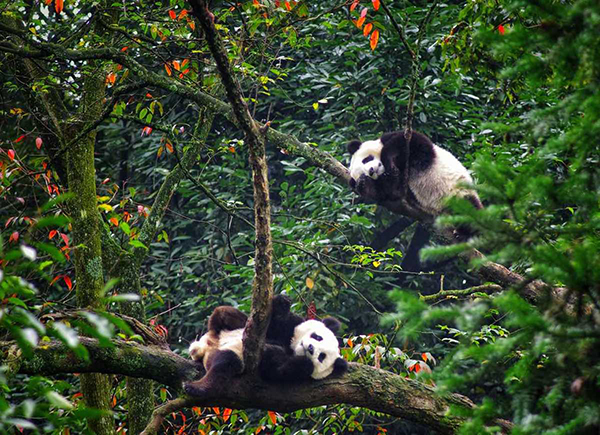| Location: Home > News > Events |
| China Daily:Giant pandas ate bamboo as early as 7 million years ago, study says |
|
A Chinese research team has reported new findings on the evolution of the giant panda's false thumb, suggesting the giant panda was already a dedicated bamboo feeder over 6 million years ago. The study, conducted by scientists at the Institute of Vertebrate Paleontology and Paleoanthropology of the Chinese Academy of Sciences and the Kunming Institute of Zoology of the CAS, was recently published in the journal Scientific Reports. Of the many characteristics that enable the giant panda, a member of the order Carnivora, to adapt to life as a dedicated bamboo feeder, its extra "thumb "is one of the most famous and intriguing, according to Deng Tao with the IVPP, one of the authors of the study. In addition to the normal five digits on the paws of most mammals, the giant panda has a greatly enlarged wrist bone, the radial sesamoid, which acts as a sixth digit-an opposable thumb for manipulating bamboo, Deng said. The researchers studied the earliest enlarged radial sesamoid, which was already a functional opposable thumb, in the ancestral panda genus Ailurarctos from the late Miocene site of Shuitangba in Southwest China's Yunnan province. They found that it would have been difficult for the extinct panda's false thumb to collect food like seeds, nuts and berries. Bamboo would have been one of the few feeding targets of the evolution of its enlarged radial sesamoid. The research results indicate that the giant panda's dedicated bamboo diet dates back to as early as 7 million to 6 million years ago. The false thumb has not enlarged further since the late Miocene, and never evolved into a full digit. The researchers believe that this reflects the feature's dual functions of bamboo manipulation and weight distribution. Since the giant panda's habitat is rich in bamboo, the species does not need a longer thumb to access the readily available food, Deng said. Additionally, an excessively lengthy radial sesamoid would make walking uncomfortable for the giant panda as it walks with a plantigrade posture, Deng added. |
